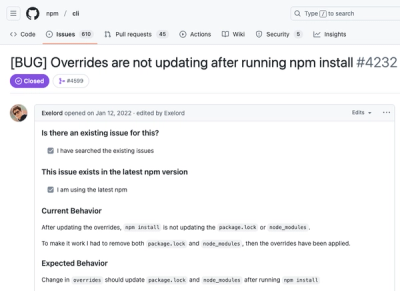hase
hase handles exchanges and queues on RabbitMQ.

Installation
$ npm install hase
Quick start
First you need to add a reference to hase in your application.
const hase = require('hase');
Then you need to connect to a RabbitMQ instance by calling the connect function and providing the instance's url.
const mq = await hase.connect({ url: 'amqp://...' });
By default hase will only prefetch one message at a time. If you want to increase the prefetch size use the prefetch option.
const mq = await hase.connect({
url: 'amqp://...',
prefetch: 64
});
If something goes wrong, an error is emitted on the mq object. So you should subscribe to the error event.
const mq = await hase.connect({ url: 'amqp://...' });
mq.once('error', err => {
});
Additionally, if you want to get informed when hase becomes disconnected, subscribe to the disconnect event.
const mq = await hase.connect({ url: 'amqp://...' });
mq.once('disconnect', err => {
});
Using workers
A worker is a combination of a single exchange with a single queue that shares its load across multiple nodes. For that, call the worker function and specify a name.
const mq = await hase.connect({ url: 'amqp://...' });
mq.once('error', err => {
});
const worker = mq.worker('test');
To publish messages to this worker, call the createWriteStream function, and then use the write function of the stream that is returned.
const mq = await hase.connect({ url: 'amqp://...' });
mq.once('error', err => {
});
const stream = await mq.worker('test').createWriteStream();
stream.write({ foo: 'bar' });
To subscribe to messages received by this worker, call the createReadStream function, and then subscribe to the stream's data event. You can access the message's payload through its payload property.
Additionally, you need to process the received message. If you were able to successfully handle the message, call the next function. If not, either call discard (which removes the message), or call defer (which requeues the message).
const mq = await hase.connect({ url: 'amqp://...' });
mq.once('error', err => {
});
const stream = await mq.worker('test').createReadStream();
stream.on('data', message => {
message.next();
});
Using publishers
A publisher is a combination of a single exchange with multiple queues where each queue receives all messages. For that, call the publisher function and specify a name.
const mq = await hase.connect({ url: 'amqp://...' });
mq.once('error', err => {
});
const publisher = mq.publisher('test');
To publish messages to this publisher, call the createWriteStream function, and then use the write function of the stream that is returned.
const mq = await hase.connect({ url: 'amqp://...' });
mq.once('error', err => {
});
const stream = await mq.publisher('test').createWriteStream();
stream.write({ foo: 'bar' });
To subscribe to messages received by this publisher, call the createReadStream function, and then subscribe to the stream's data event. You can access the message's payload through its payload property.
Additionally, you need to process the received message. If you were able to successfully handle the message, call the next function. If not, either call discard (which removes the message), or call defer (which requeues the message).
const mq = await hase.connect({ url: 'amqp://...' });
mq.once('error', err => {
});
const stream = await mq.publisher('test').createReadStream();
stream.on('data', message => {
message.next();
});
Running the build
To build this module use roboter.
$ npx roboter
License
The MIT License (MIT)
Copyright (c) 2014-2019 the native web.
Permission is hereby granted, free of charge, to any person obtaining a copy of this software and associated documentation files (the "Software"), to deal in the Software without restriction, including without limitation the rights to use, copy, modify, merge, publish, distribute, sublicense, and/or sell copies of the Software, and to permit persons to whom the Software is furnished to do so, subject to the following conditions:
The above copyright notice and this permission notice shall be included in all copies or substantial portions of the Software.
THE SOFTWARE IS PROVIDED "AS IS", WITHOUT WARRANTY OF ANY KIND, EXPRESS OR IMPLIED, INCLUDING BUT NOT LIMITED TO THE WARRANTIES OF MERCHANTABILITY, FITNESS FOR A PARTICULAR PURPOSE AND NONINFRINGEMENT. IN NO EVENT SHALL THE AUTHORS OR COPYRIGHT HOLDERS BE LIABLE FOR ANY CLAIM, DAMAGES OR OTHER LIABILITY, WHETHER IN AN ACTION OF CONTRACT, TORT OR OTHERWISE, ARISING FROM, OUT OF OR IN CONNECTION WITH THE SOFTWARE OR THE USE OR OTHER DEALINGS IN THE SOFTWARE.




